Jiangshi – Terrifying Vicious Ancient Chinese Vampire In Disguise
A. Sutherland - AncientPages.com - Myths and legends of Europe, the Americas, China, Japan, and India describe terrible bloodsuckers that may differ in power and individual characteristics. Still, all of them fascinate people, and their vampiric fright knows no borders.
The Jiangshi vampire. Credit: Adobe Stock - FantasyLand86
Influential legends about Jiangshi (or Jiang shi) have long inspired a genre of literature, movies, and video games, especially in Hong Kong and East Asia.
Jiangshi - a genuinely terrifying undead Chinese creature - is described in Chinese legends and folklore as a half-vampire, half-zombie.
Typically, the Jiangshi (hopping vampire or hopping zombie) is depicted as a stiff corpse dressed in the official garments of the Qing dynasty (1644–1912), the last great dynastic empire to rule the region, with many powerful and long-lived rulers.
The belief that the human body can walk and function without personal consciousness or the soul is an idea that has captivated human beings for centuries. This idea is partially implausible as it may be more accurate than one thinks. Within Chinese culture and folklore, strange stories describe a creature known as the Jiangshi. It is believed to be as real, deadly, and terrifying as zombies.
Perhaps the Jiangshi is only an unrealistic, evil creature in Chinese folklore that was used in simple stories to scare children; however, the most remote villages of China blindly believe in the existence of this entity from the underworld and many similar ones.
Are not all the legends based on true events?
According to Chinese legends and folklore, Jiangshi – (‘jiang’ means hard) is a reanimated corpse of a victim of drowning, suicide, hanging, or smothering. These creatures are believed to be particularly vicious, ripping the heads and limbs of their victims.
The Jiangshi is so stiff that it cannot bend its limbs and body, so it moves by hopping, with its arms always outstretched, seeking out living creatures at night and killing them by devouring their ‘qi’ life force. It helps the Jiangshi to survive.
The Jiangshi vampire wears a uniform coat-like robe and round, traditional mandarin hat; they cannot speak and have pale skin, furry green hair, sharp, long claw-like fingernails, and an extremely long tongue.
The Jiangshi is not traditionally equated with the zombie but instead a vampire. During the day, the Jiangshi rests in either a coffin or hides in a dark, chilly cave.
According to one Qing Dynasty scholar, Ji Xiaolan (1724–1805), Jiangshi creatures can be divided into two groups: an old corpse that hasn’t decomposed or a freshly dead body returning to life. When Jiangshi’s corpse is recently deceased, the creature looks almost like an average human. Others, who have been decomposing for some time, have rotting flesh hanging off their yellowing bones. Jiangshi lore is very ancient, and the creature’s existence was taken very seriously by scholars in ancient China who speculated on how Jiangshi was created.
In the meantime, ancient Chinese sincerely believed in dangerous encounters with Jiangshi and tried to protect their homes.
Slats of wood 6 inches high were built under doors in the strange belief that these would keep out hopping zombies. To keep a Jiangshi in place, a slip of yellow paper with a spell written on it was usually also stuck on the corpses.
But the best way to eliminate this terrifying creature was to ask a Taoist priest for help. He was the only one who could balance their life and death with dark and light.
In popular Chinese mythology, reanimated corpses that hop around, killing living creatures to absorb life essence from their victims. Jiangshi is also pronounced Geung si, which is the Cantonese pronounciation for 'Hopping Corpse'. They are said to be created when a person's soul fails to leave the deceased's body.
The myth of "The Corpses who travel a Thousand Li" describes Tao wizards who transport corpses over long distances to hop on their own feet back to their hometown for proper burial. But there were also people who believed that hopping corpses were originally smugglers in disguise who wanted to scare off law enforcement officials
Hopping Corpses were a popular subject in Hong Kong movies during the 1980s;
some movies even featured both Chinese Hopping Corpse and "Western" zombie. In
the movies, hopping corpses can be put to sleep by putting on their foreheads a piece
of yellow paper with a spell written on it.
Generally in the movies these terrifying figures are dressed in imperial Qing Dynasty clothes, their arms are always outstretched due to rigor mortis. They can be evaded by holding one's breath, as they track living creatures by detecting their breathing.
Written by – A. Sutherland AncientPages.com Staff Writer
Updated on February 16, 2024
Copyright © AncientPages.com All rights reserved. This material may not be published, broadcast, rewritten or redistributed in whole or part without the express written permission of AncientPages.com
Expand for referencesReferences:
K.W. Bishop, 'How zombies conquered popular culture'.
More From Ancient Pages
-
 Elizabeth Woodville: Mother Of The Princes In The Tower And Commoner Queen
Featured Stories | Jul 16, 2018
Elizabeth Woodville: Mother Of The Princes In The Tower And Commoner Queen
Featured Stories | Jul 16, 2018 -
 Lares: Roman Household Gods That Protected Home And Family
Ancient Traditions And Customs | Dec 14, 2020
Lares: Roman Household Gods That Protected Home And Family
Ancient Traditions And Customs | Dec 14, 2020 -
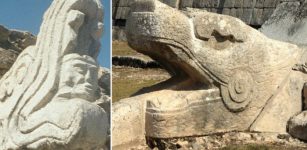 Kukulkan (Quetzalcoatl): Feathered Serpent And Mighty Snake God
Featured Stories | Feb 7, 2017
Kukulkan (Quetzalcoatl): Feathered Serpent And Mighty Snake God
Featured Stories | Feb 7, 2017 -
 Who Was Pseudo-Nero?
Ancient History Facts | Apr 25, 2016
Who Was Pseudo-Nero?
Ancient History Facts | Apr 25, 2016 -
 Ancient Copy Of Jesus’ Secret Teachings To His Brother James Discovered – First Apocalypse And Future Events Described
Artifacts | Dec 2, 2017
Ancient Copy Of Jesus’ Secret Teachings To His Brother James Discovered – First Apocalypse And Future Events Described
Artifacts | Dec 2, 2017 -
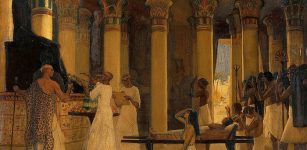 Egyptians Mastered Medicine Thousands Of Years Ago
Civilizations | Oct 1, 2015
Egyptians Mastered Medicine Thousands Of Years Ago
Civilizations | Oct 1, 2015 -
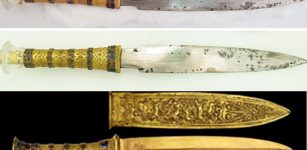 King Tut’s Cosmic Dagger Was Not Made In Egypt – New Study Reveals
Archaeology | Feb 24, 2022
King Tut’s Cosmic Dagger Was Not Made In Egypt – New Study Reveals
Archaeology | Feb 24, 2022 -
 Unusual Viking Secret Hidden Underground In California Reminds Of A Similar Discovery In Colorado
Featured Stories | Sep 12, 2024
Unusual Viking Secret Hidden Underground In California Reminds Of A Similar Discovery In Colorado
Featured Stories | Sep 12, 2024 -
 Viking Ragnar Lodbrok Wanted To Kill His Son Ivar The Boneless
Featured Stories | Jun 19, 2017
Viking Ragnar Lodbrok Wanted To Kill His Son Ivar The Boneless
Featured Stories | Jun 19, 2017 -
 Ancient Cities Built By Biblical Giants – Archaeological Evidence
Ancient Mysteries | Jun 2, 2018
Ancient Cities Built By Biblical Giants – Archaeological Evidence
Ancient Mysteries | Jun 2, 2018 -
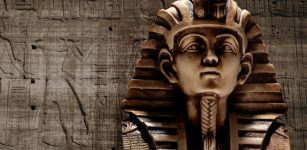 Unraveling Pharaohs’ True Knowledge Of Hieroglyphs – Could All Pharaohs Read And Write?
Featured Stories | Jun 22, 2022
Unraveling Pharaohs’ True Knowledge Of Hieroglyphs – Could All Pharaohs Read And Write?
Featured Stories | Jun 22, 2022 -
 Most Of Medieval English Heroic Or Chivalric Stories Have Been Lost
Archaeology | Feb 18, 2022
Most Of Medieval English Heroic Or Chivalric Stories Have Been Lost
Archaeology | Feb 18, 2022 -
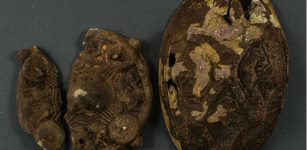 Family Looking For Lost Gold Ring Finds Viking Age Artifacts In Their Garden On The Island Of Jomfruland
Archaeology | Sep 30, 2023
Family Looking For Lost Gold Ring Finds Viking Age Artifacts In Their Garden On The Island Of Jomfruland
Archaeology | Sep 30, 2023 -
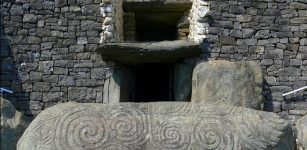 Incest In The Elite Of Neolithic Ireland – Incredible Findings
Archaeology | Jun 24, 2020
Incest In The Elite Of Neolithic Ireland – Incredible Findings
Archaeology | Jun 24, 2020 -
 Underground Bronze Treasures Unearthed In 2,300-Year-Old Chengdu, China’s Sichuan Province
Archaeology | Mar 7, 2017
Underground Bronze Treasures Unearthed In 2,300-Year-Old Chengdu, China’s Sichuan Province
Archaeology | Mar 7, 2017 -
 What Was It Like To Be A Student In The Middle Ages?
Ancient History Facts | Jun 6, 2019
What Was It Like To Be A Student In The Middle Ages?
Ancient History Facts | Jun 6, 2019 -
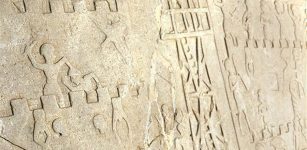 Harput Relief: 4,000-Year-Old Artifact Pushes Back History Of Region By 1,000 Years
Archaeology | Mar 23, 2017
Harput Relief: 4,000-Year-Old Artifact Pushes Back History Of Region By 1,000 Years
Archaeology | Mar 23, 2017 -
 Axis Mundi That Symbolizes Separation Of The Earth From The Heaven
Featured Stories | Jul 2, 2018
Axis Mundi That Symbolizes Separation Of The Earth From The Heaven
Featured Stories | Jul 2, 2018 -
 Cave 53 In Qumran Region In Judean Desert Reveals More Secrets
Archaeology | Feb 28, 2022
Cave 53 In Qumran Region In Judean Desert Reveals More Secrets
Archaeology | Feb 28, 2022 -
 On This Day In History: Hubble Space Telescope Was Launched – On April 24, 1990
News | Apr 24, 2016
On This Day In History: Hubble Space Telescope Was Launched – On April 24, 1990
News | Apr 24, 2016

